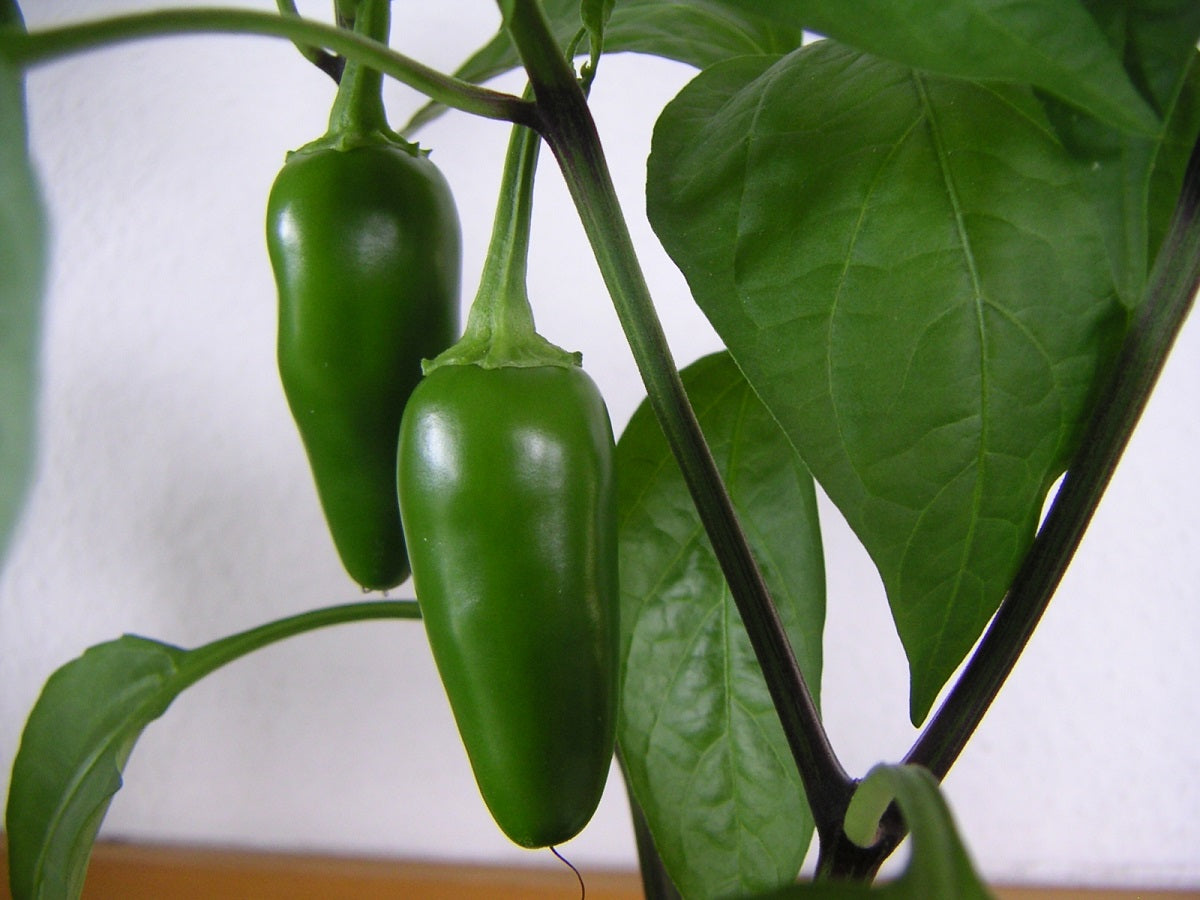Description
The Chilli (Capsicum sp.) "Jalapeño" is renowned for its signature kick of heat and versatility in culinary creations. Recognisable by its medium-sized, green to red fruit, the "Jalapeño" offers a heat level typically ranging between 2,500 to 8,000 Scoville Heat Units (SHU). This popular pepper adds more than just a spicy flair; its lush green foliage and subtle white flowers in Djilba (early spring) make it a visual treat as well.
Ideally suited for planting in the ground, pots, or within a vege/herb garden, the "Jalapeño" thrives in full sunlight and needs regular watering, especially during the heights of Bunuru (summer). When planting in sandy soils, enriching the ground with a quality soil conditioner will help ensure a bountiful harvest. To optimise fruit yield, feed the plant with a balanced fertiliser in Djilba (early spring). Typically, fruits are ready to harvest 70-85 days after planting. While not extremely hot, always exercise caution when handling and consuming to avoid unexpected surprises.
| Botanical Name | Capsicum annuum |
| Common Name | Chilli Pepper |
| Cultivar | Jalapeño |
|
Classification |
Herbs and Veges |
| PBR Name | |
| Origin | North, Central, South America |
| Foliage | Evergreen |
| Height | Chilli plants generally grow 60 cm - 1 M |
| Width | Chilli plants generally grow 60 cm - 1 M |
| Light | Full sun |
| Soil | Well-draining, good quality soil is important for good fruit-set. |
| Water Requirement | Though Chilli plants are tolerant of low water, they will fruit better with regular water in warm weather. Reducing watering when fruit is ripening can increase heat levels in the fruit. |
| Lifespan | Perennial |
| Flower Colour | White |
| Flower Time | Depending on when the plant is germinated. Generally flowers from Birak (early summer) to Djeran (autumn) |
| Toxicity | Chilli plants contain Capsaicin, the higher the Scoville Heat Unit (SHU) score, the more capsaicin the plant contains. Capsaicin is toxic to most animals if ingested. Humans can tolerate capsaicin, however it can be toxic at high enough levels, so caution must be taken when ingesting chillis. Capsaicin is also harmful to sensitive areas of the skin in humans and animals. Special care should be taken to avoid the eyes, nasal passage and groin in particular. |
Disclaimer:
Information is intended as a guide only.
Unless otherwise stated, all images are examples only and not photos of the actual plants for sale.
Licensed images are used with permission of the license holder.
Payment & Security
Your payment information is processed securely. We do not store credit card details nor have access to your credit card information.

